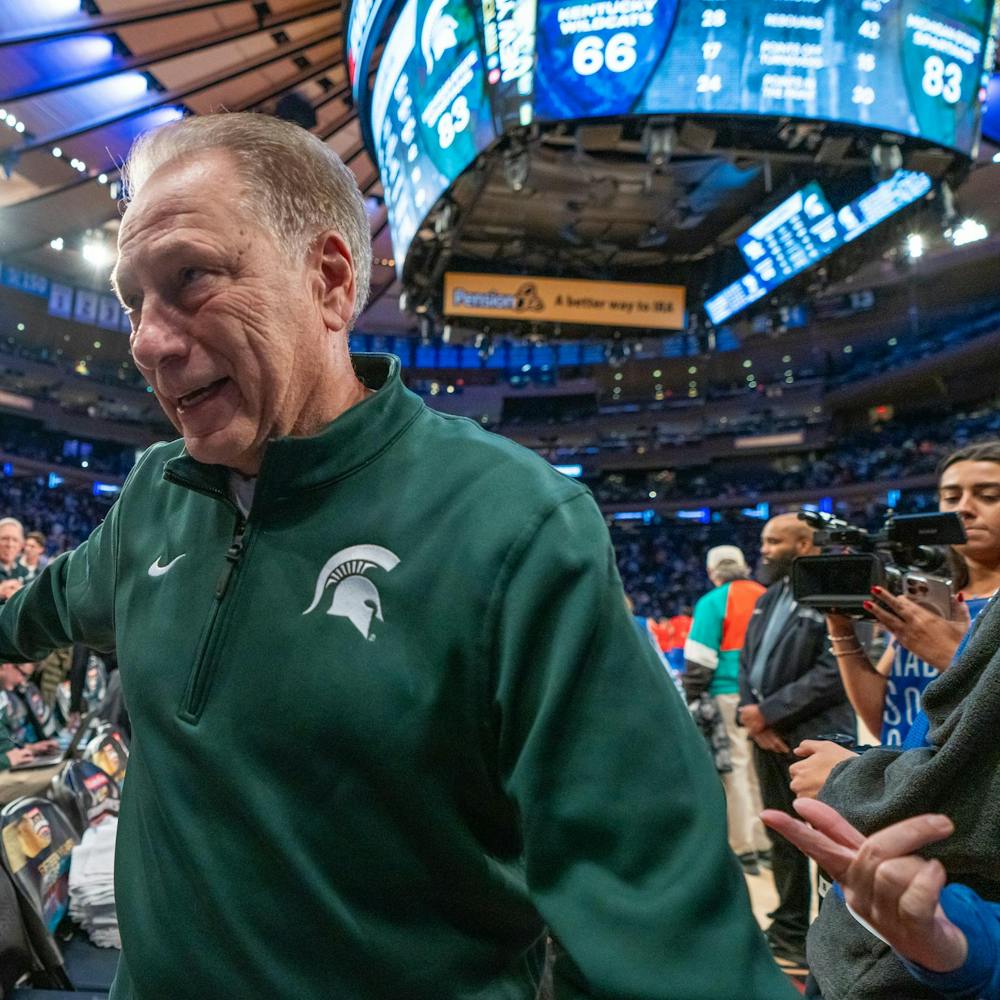Larry Nassar is the U.S. gymnastics national medical director and has traveled to four Olympics as the team physician.
Nassar worked hands-on with multiple U.S. gold medalists, including Dewitt, Mich., native Jordyn Wieber, throughout the London Games. He also serves as the team physician for the MSU gymnastics and rowing teams as well as a team doctor at Holt High School.
-Compiled by Stephen Brooks
What were your roles and responsibilities as a U.S. team physician in London?
“I was a doctor for the gymnastics (team) — men’s, women’s trampoline (and) rhythmic teams. So basically, that’s what my main responsibility was: that we had full medical coverage for those athletes.”
Jordyn Wieber had some injuries that hindered her at the Olympics; could you talk about what those were and what happened to her?
“Jordyn unfortunately had bruised her heal on a dismount off the uneven bars, and when she bruised her heel, this was probably 2 months ago … she was trying to treat the heel and continued to progress.
But because of the heel bruise, she started to favor it because in training for the Olympics, she kept on training and really didn’t complain much about the heel bruise and tried to overcome that. In the meantime, she was favoring it a bit and had a little bit of the shin splints.It was her right heel, and then her right shin started to hurt, which she did not report, unfortunately. I had no clue her heel was hurting until she showed up at Olympic training camp.
So she had already made it through Olympic trials, and the training camp to prepare for the Olympics is when she first notified us about her shin hurting. … My concern was that she was already developing a stress fracture at that point. We were calling it a stress reaction to start because it wasn’t that bad, but there was concern with the training that lied ahead that it was just a matter of time that she would develop a stress fracture … it was a race against time, you could say. So we modified her training the best we could, and we took care of it, and we gave her a lot of treatment; we knew heading in that this was going to be a difficulty.
So we had to decrease her training, which, when you’re trying to compete for the Olympics when you have other athletes around the world training at their highest capacity and you’re having to modify because of an injury, you’re not at your peak. And that’s what was going on with Jo. … Prior to her competing, this was becoming more like a stress fracture and we had to make some decisions, and we decided that she should be able to do her best to fight through it if we modify things, which we did. … So she took fourth (in the all-around competition preliminaries), which is pretty good for someone with basically a fractured leg to be able to do.
But because two of her teammates placed higher than her, Gabby (Douglas) and Aly (Raisman), she didn’t qualify for all-around finals because there’s a rule that says only two athletes per country are allowed in all-around event finals. So that left her sitting with no all-around finals, unfortunately. When that occurred, she obviously was very distraught; it was very hard on her.
What was amazing was how Jordyn was able to correct herself, get herself together and not be a distraction from the team and actually was a heck of an asset and did her best to help the team when it came to team finals, which was only a couple days later to win the gold medal.
She went out there and showed the judges and showed everyone that she is the world champion that she is and had a great competition to help us get the gold medal. She gave it all there.”
How difficult is it for athletes to balance being in their top competitive shape without overworking their bodies and burning out?
“It can be (difficult). Remember, this is the accumulation, for any athlete to be at the Olympics, of years and years of training. So there is a lot of preparation, and at that point, they should be in their best physical shape. So being able to decrease their physical training at that point is not as bad as decreasing it before because, hopefully, they’ve put the hours and the reps in that they can handle still getting through the last couple weeks of the competitive cycle.”
You’ve been to four different Olympics in your career; how did London compare to past games in terms of both competition and atmosphere?
“The team, first of all, was the most cohesive team that I’ve ever worked with. It was amazing for me to see how well they took care of each other and how well the athletes would … help each other out and had true concern for each other and true appreciation for how each other did. They rallied around each other and actually made a huge difference in their abilities to compete. I’ve never seen a team be so cohesive like that in all the years that I’ve been with gymnastics; it was amazing. As far as the London Games go in general, they did an amazing job in both facilities and the transportation systems. The cafeterias — they did a great job providing good foods for the kids to eat, good variety and stuff, too. Overall, I felt that the setup was one of the best setups that we’ve had to help prepare our athletes for the competition.”
In your opinion, what makes the Olympics so special and unlike any other athletic event on the planet?
“The reason is that it’s every four years, number one. So you have to be in your tip-top shape, and if you miss it, you may not, in your cycle of training, be able to do (it for) another four years. So for most athletes, it’s a once-in-a-lifetime event. You have to be the right age, in the right shape, right at that time; (especially) if you think about thousands of thousands of athletes who are trying, especially for gymnastics, where there’s only five spots. So you have to be in the top five in the country at the right time, at the right moment, and peak at the right time. That’s difficult for any athlete to do because if you miss it, that’s it. You may have missed your chance of a lifetime. It’s not like you get another chance the next year or the year after that; it’s (four) years later. And that’s rough.”
Support student media!
Please consider donating to The State News and help fund the future of journalism.
Discussion
Share and discuss “Face Time with U.S. gymnastics trainer Larry Nassar” on social media.






